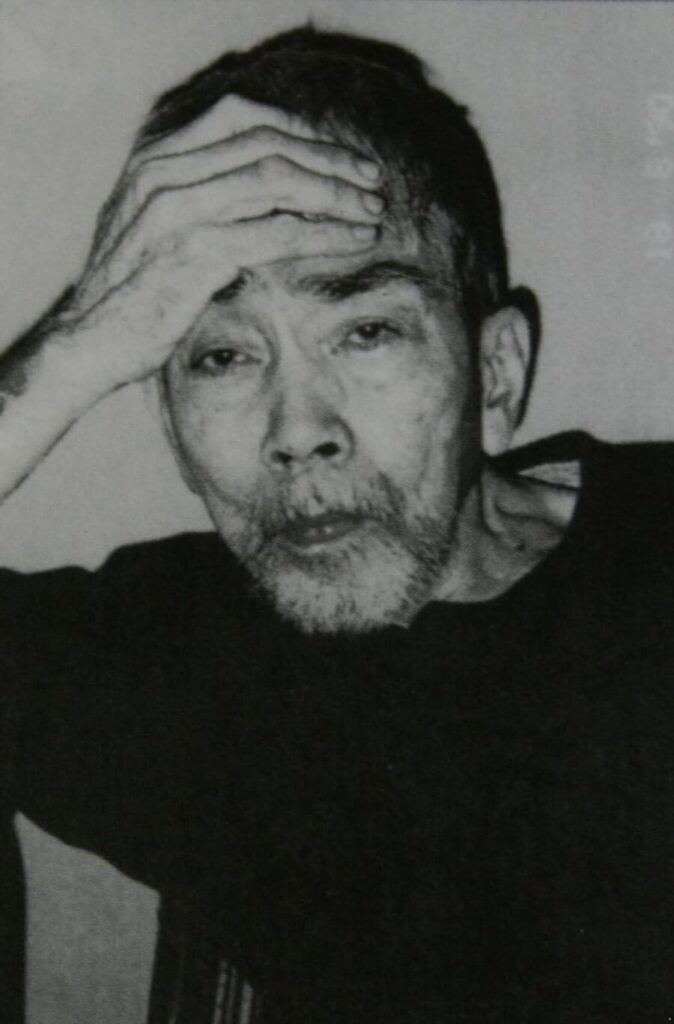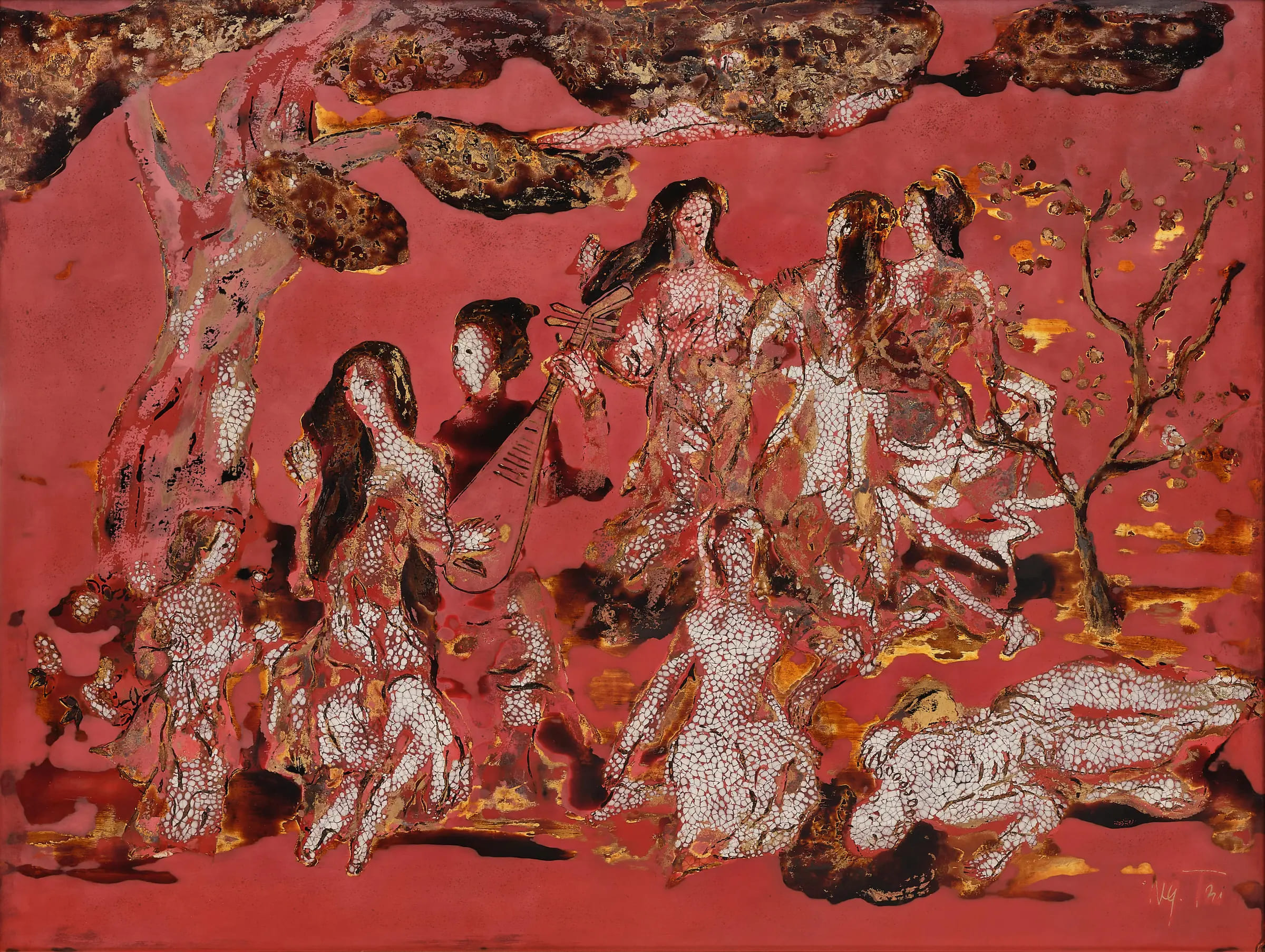Nguyễn Gia Trí – the pioneering master of modern Vietnamese lacquer painting – left an indelible mark on the nation’s art history with his opulent works blending Eastern and Western essences. If you’re diving into Nguyễn Gia Trí’s biography, his innovative career journey, or the timeless Nguyễn Gia Trí masterpieces still gracing art galleries today, this article will guide you through it all in detail, from his humble village roots in An Trạch to the pinnacles of artistic greatness.
For enthusiasts of Vietnamese artwork, explore more at Van Art Gallery, where such treasures come alive.
Nguyễn Gia Trí’s Biography: From Rural Village to Legendary Artist
Nguyễn Gia Trí’s biography begins in a modest family in An Trạch village, Chương Mỹ district, Hanoi, where he was born on September 27, 1908. As the fourth son in a family with a tradition of embroidery for the imperial court, he grew up along the Red River, where the natural landscapes nurtured his passion for painting from a young age.
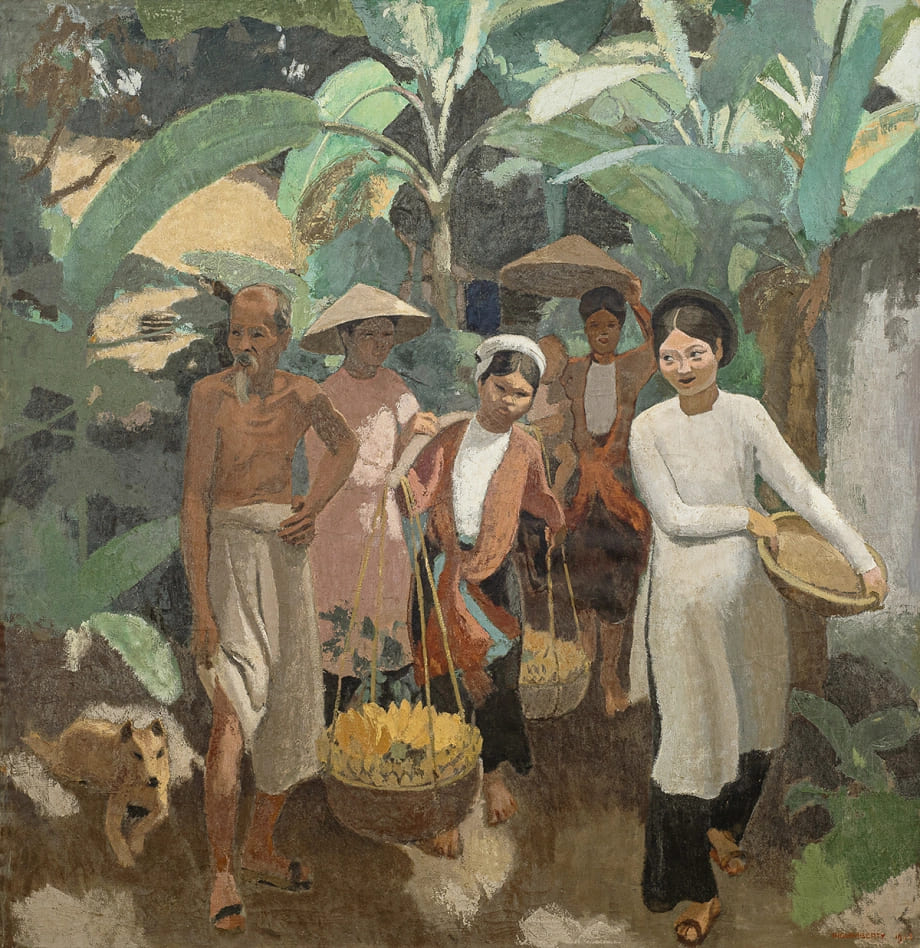
Childhood and Early Steps in Nguyễn Gia Trí’s Biography
From childhood, Nguyễn Gia Trí displayed his drawing talent through sketches of rural village scenes. Though his family wasn’t wealthy, he was encouraged to pursue art by his grandfather, a renowned embroidery artisan.
- 1925: Passed the entrance exam for the fifth class of the Indochina College of Fine Arts, studying alongside future luminaries like Tô Ngọc Vân and Trần Văn Cẩn.
- 1927: Left school after two years for self-study but returned for the seventh class on the advice of principal Victor Tardieu.
- 1936: Graduated with honors, becoming one of Vietnam’s “Four Greats in Fine Arts”: first Trí, second Vân, third Lân, fourth Cẩn.
Nguyễn Gia Trí’s biography stands as a testament to perseverance, from a village boy to a leading painter.
Personal Life and Challenges Faced by Nguyễn Gia Trí
Nguyễn Gia Trí married Nguyễn Thị Đào – his quiet lifelong companion – and they had five children. His life was intertwined with historical upheavals: he engaged in politics through the Đại Việt Dân Chính Party and was exiled by the French to Sơn La in 1940.
During the resistance years, he lived simply, continuing to create amid bombs and bullets. After 1954, he migrated south and settled in Ho Chi Minh City, where he completed his major masterpieces. In 1993, he passed away on June 20 in Ho Chi Minh City at the age of 85. In 2012, he was posthumously awarded the Hồ Chí Minh Prize, honoring his contributions to Vietnamese fine arts.
Nguyễn Gia Trí’s Career: From Student to Father of Modern Lacquer Painting
Nguyễn Gia Trí’s career was a revolutionary journey in art, elevating lacquer from mere decoration to high fine art, peaking between 1938 and 1945.
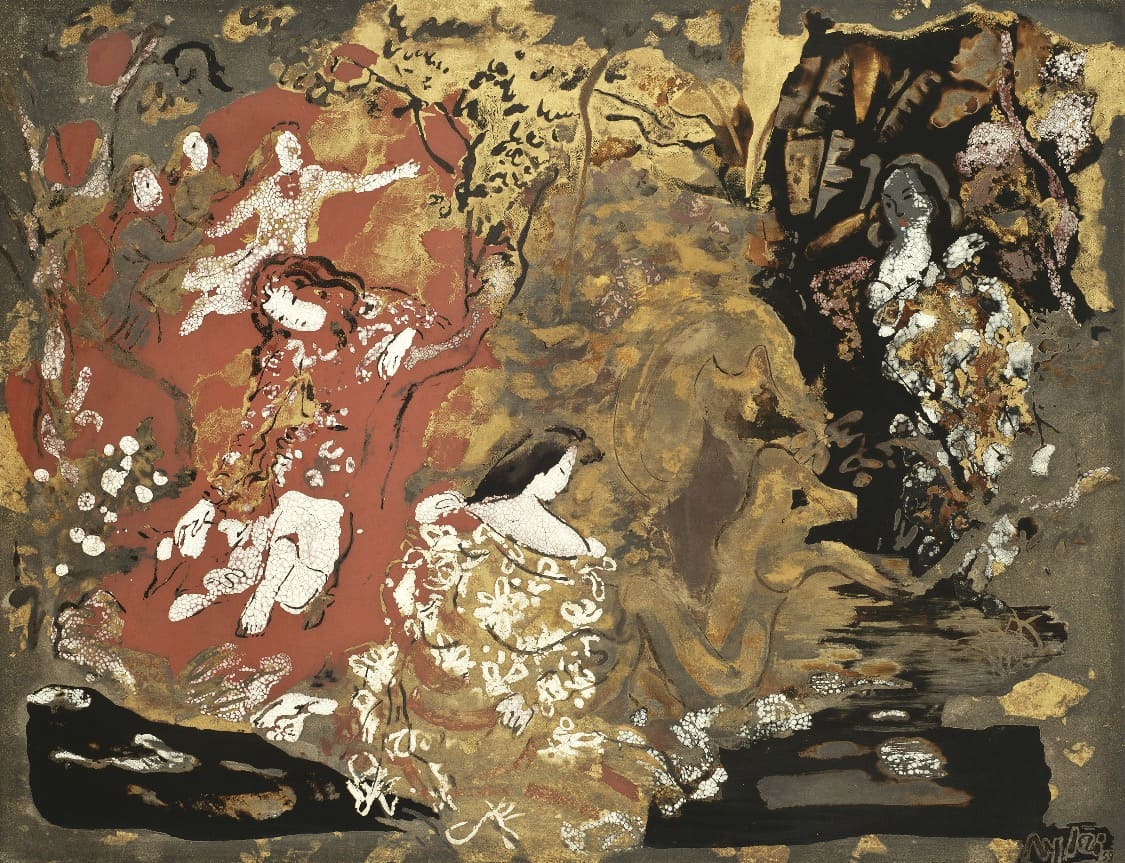
How Did Nguyễn Gia Trí’s Career Begin? Key Milestones
Right after graduation, Nguyễn Gia Trí plunged into creation, experimenting with lacquer in the 1930s.
- 1930s: Explored new techniques, blending traditional Vietnamese lacquer with pine resin for a unique matte sheen.
- 1939: Held his first solo exhibition at the Indochina College of Fine Arts, stunning audiences with lacquer paintings.
- 1940-1945: Completed series of female figures and landscapes, cementing his status as the “father of modern lacquer.”
- After 1954: Shifted to abstraction (1960s-1970s), then returned to romanticism, crafting large screens. Nguyễn Gia Trí’s career was also tied to politics: involvement in the Đại Việt Dân Chính Party led to exile, yet he never stopped innovating.
Contributions of Nguyễn Gia Trí’s Career to Vietnamese Fine Arts
Nguyễn Gia Trí revolutionized lacquer by incorporating carving, printing, and Western painting principles, adding depth and luminosity.
- New Techniques: Layered black lacquer, red lacquer, gold and silver leaf, and eggshells for realistic-illusory effects.
- Themes: Graceful maidens in poetic natural settings, deeply rooted in national identity.
- Influence: Mentored students, elevated lacquer to international acclaim, with works displayed at the French Governor-General’s Palace.
Nguyễn Gia Trí’s career wasn’t just personal achievement; it shaped modern Vietnamese fine arts.
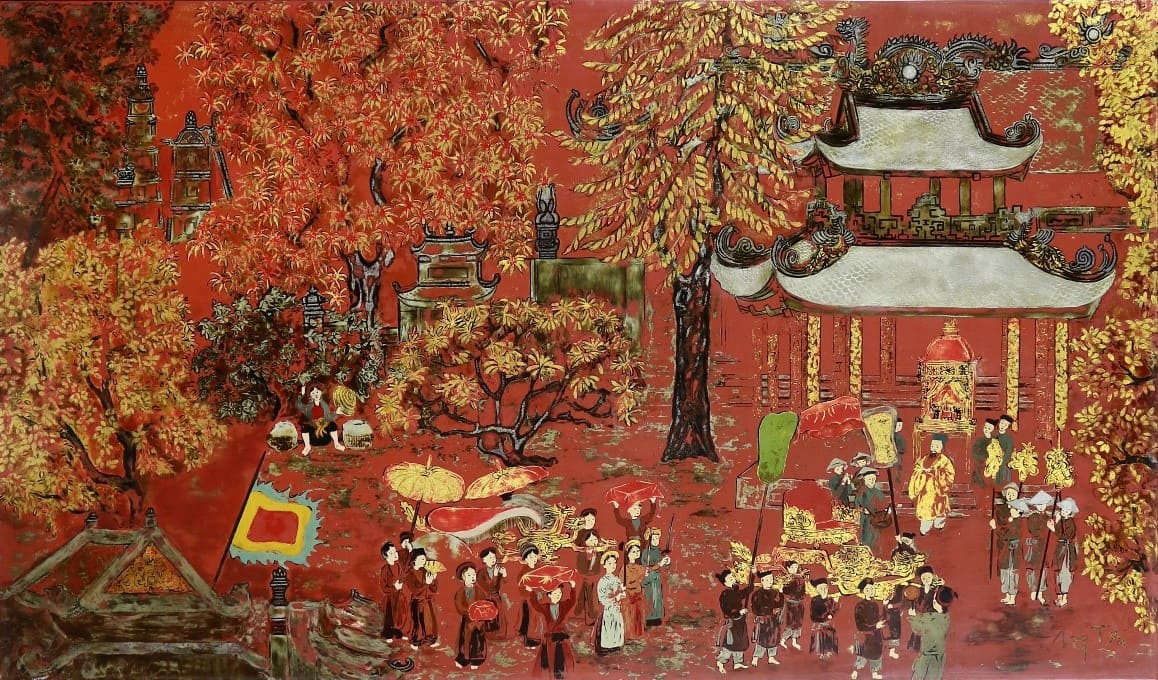
Nguyễn Gia Trí’s Masterpieces: Iconic Lacquer Works That Defined His Legacy
Nguyễn Gia Trí’s works primarily consist of lacquer paintings, with over 50 pieces large and small, shining brightest in the 1938-1945 period and after 1954.
Famous Nguyễn Gia Trí Works from His Early Career
His initial paintings drew from European realism and impressionism:
- Sunset on the River (1935): A Red River landscape evoking early poetic charm.
- Móng Cái Landscape (1936): Depicting the border region, fusing Eastern and Western strokes.
- By Hoan Kiem Lake (1935): His first lacquer piece, shimmering with misty layers.
From 1938-1945, he reached the zenith of lacquer mastery:
- Bờ Market (1938): Bustling rural market scene, with eggshell inlays for depth.
- Nude (1940): Elegant female figure with fluid lines.
- Mid-Autumn Lantern (1940): Ethereal moonlight, enhanced by red lacquer.
- Along the Taro Leaves (1942): Rough taro leaves from eggshells on a vibrant red base.
- Thầy Pagoda (1939-1940): Ancient architecture in harmonious colors.
- Christmas (1944): Festive atmosphere, glittering with gold and silver.
- Maiden by Hibiscus Flower (1944): Proud beauty, widely collected.
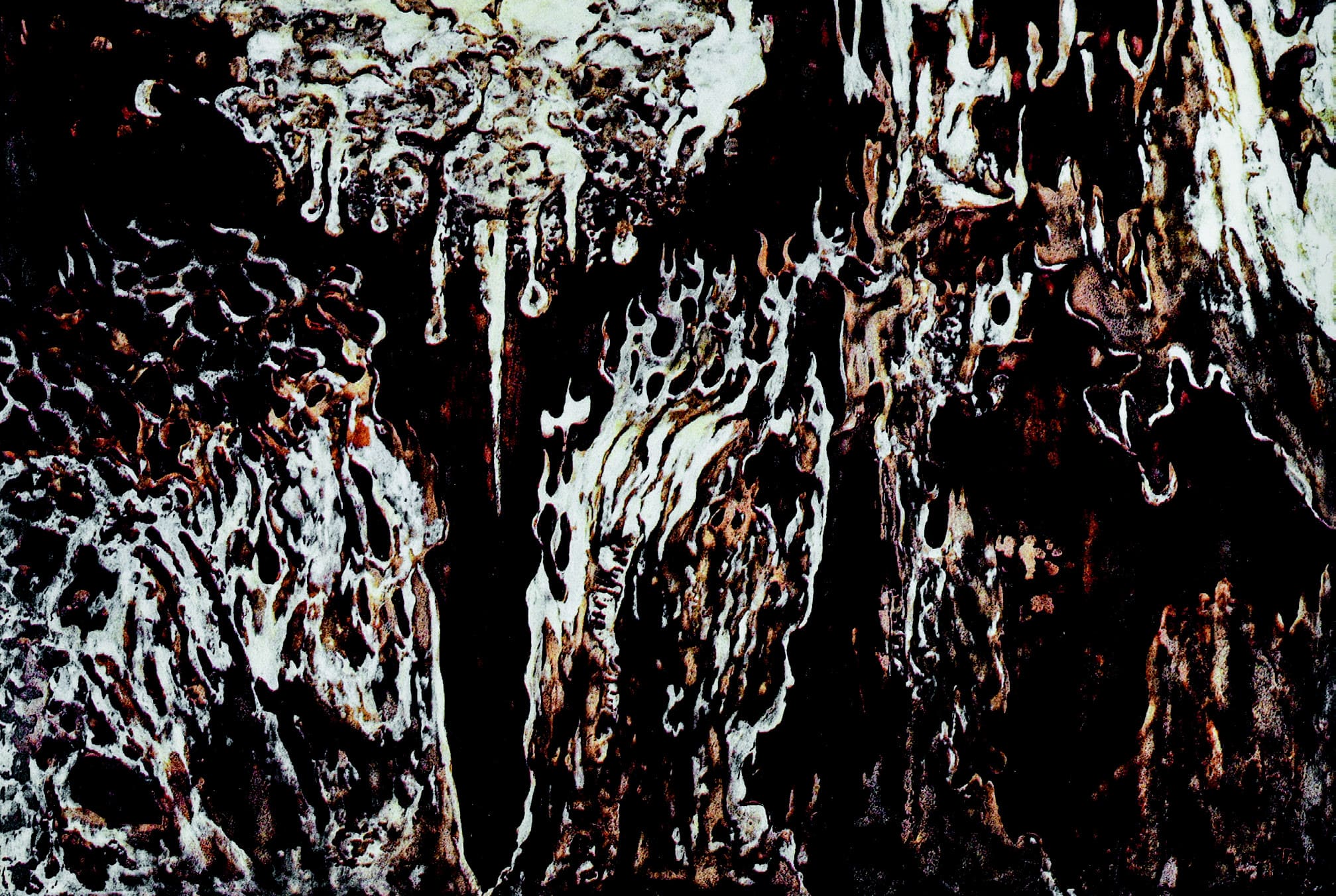
Large-Scale Nguyễn Gia Trí Masterpieces and Late-Life Icons
After 1954, he created grand screens, capping his career:
- Maiden by the Lotus Pond (1943-1954): 12m², assembled from six panels, depicting dancing maidens in a lotus garden, radiant in lacquer. Collected by the French, now at Ho Chi Minh City Fine Arts Museum.
- Maiden in the Garden (1950s): Vibrant flower garden with playful maidens, valued for form and movement.
- Spring Garden of North, Central, and South (1969-1991): 540x200cm, eight-panel assembly, maidens from three regions celebrating spring and unity. Sold for $100,000 in 1991, declared a National Treasure in 2017.
- Nostalgia for the North (1980s): Abstract reminiscence, housed at Ho Chi Minh City General Sciences Library.
- Abstract (1980s): Experimental abstraction expressing balance.
- Dance Under the Moon (1990s): Late-life romantic piece under moonlight.
Nguyễn Gia Trí’s works are often exhibited at the Vietnam Fine Arts Museum and Ho Chi Minh City Museum, featuring intaglio printing between lacquer layers for illusory depth.
The Significance of Nguyễn Gia Trí’s Works in Art History
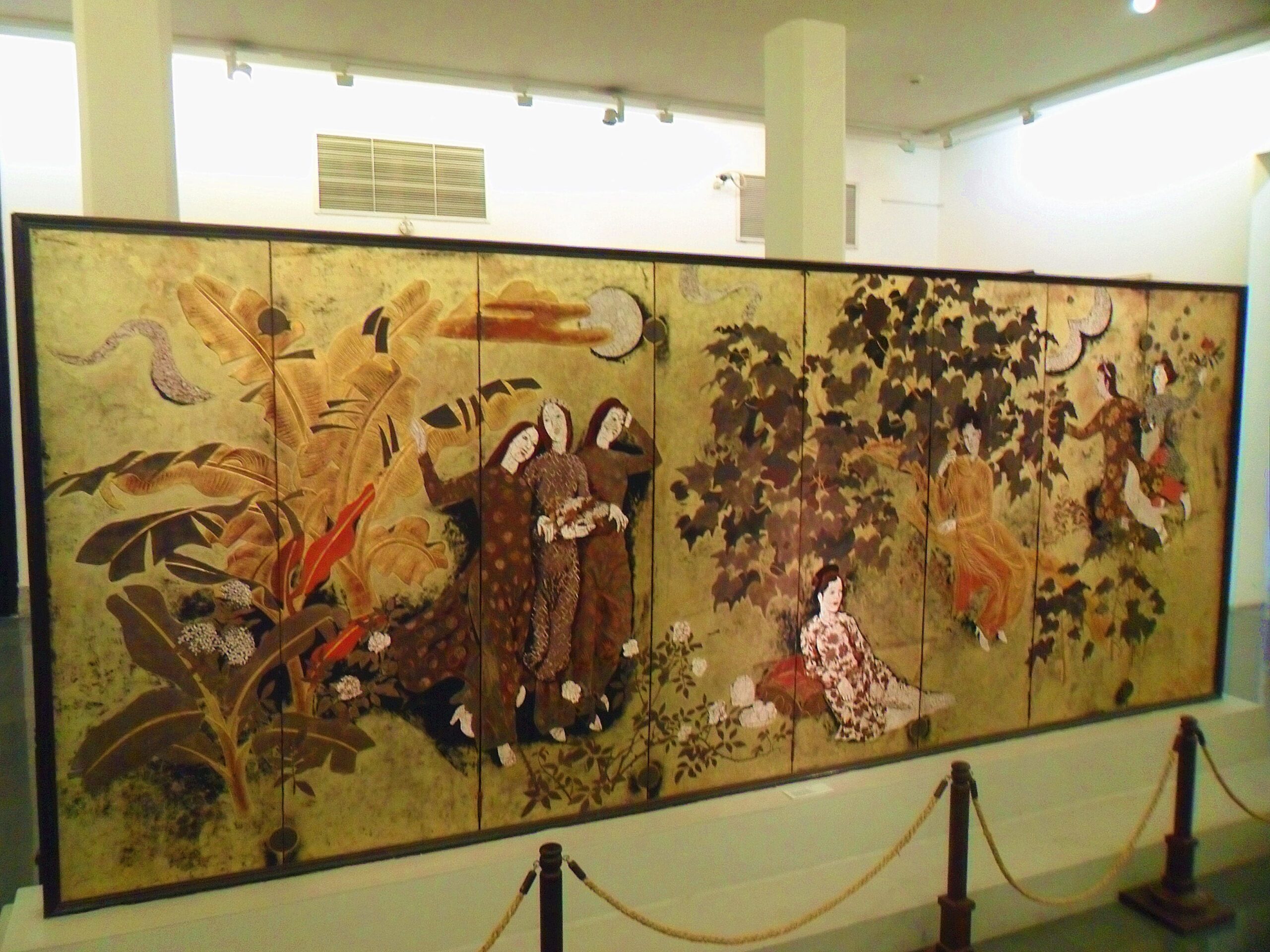
Nguyễn Gia Trí’s masterpieces aren’t just beautiful; they carry national messages: maidens symbolize Vietnamese beauty, landscapes evoke homeland nostalgia.
- Innovation: Fusing East and West, transforming lacquer from craft to fine art.
- Value: Many are “national treasures,” influencing successors like Nguyễn Tư Nghiêm.
- Collections: Acquired by France, the US, and Europe, proving their global vitality.
Nguyễn Gia Trí Awards: Honoring a Lifetime of Dedication
Nguyễn Gia Trí’s awards recognize his talent and contributions to Vietnamese fine arts.
Key Awards and Honors for Nguyễn Gia Trí
- 1939: Top prize at the Indochina College of Fine Arts Exhibition.
- 1989: Recognized as a contemporary artist who built Vietnamese fine arts.
- 1993: Second-Class Labor Medal.
- 2012: Posthumously awarded the Second Hồ Chí Minh Prize, honoring the “father of modern lacquer.”
Nguyễn Gia Trí’s awards affirm his top spot as “first Trí” among the Four Greats.
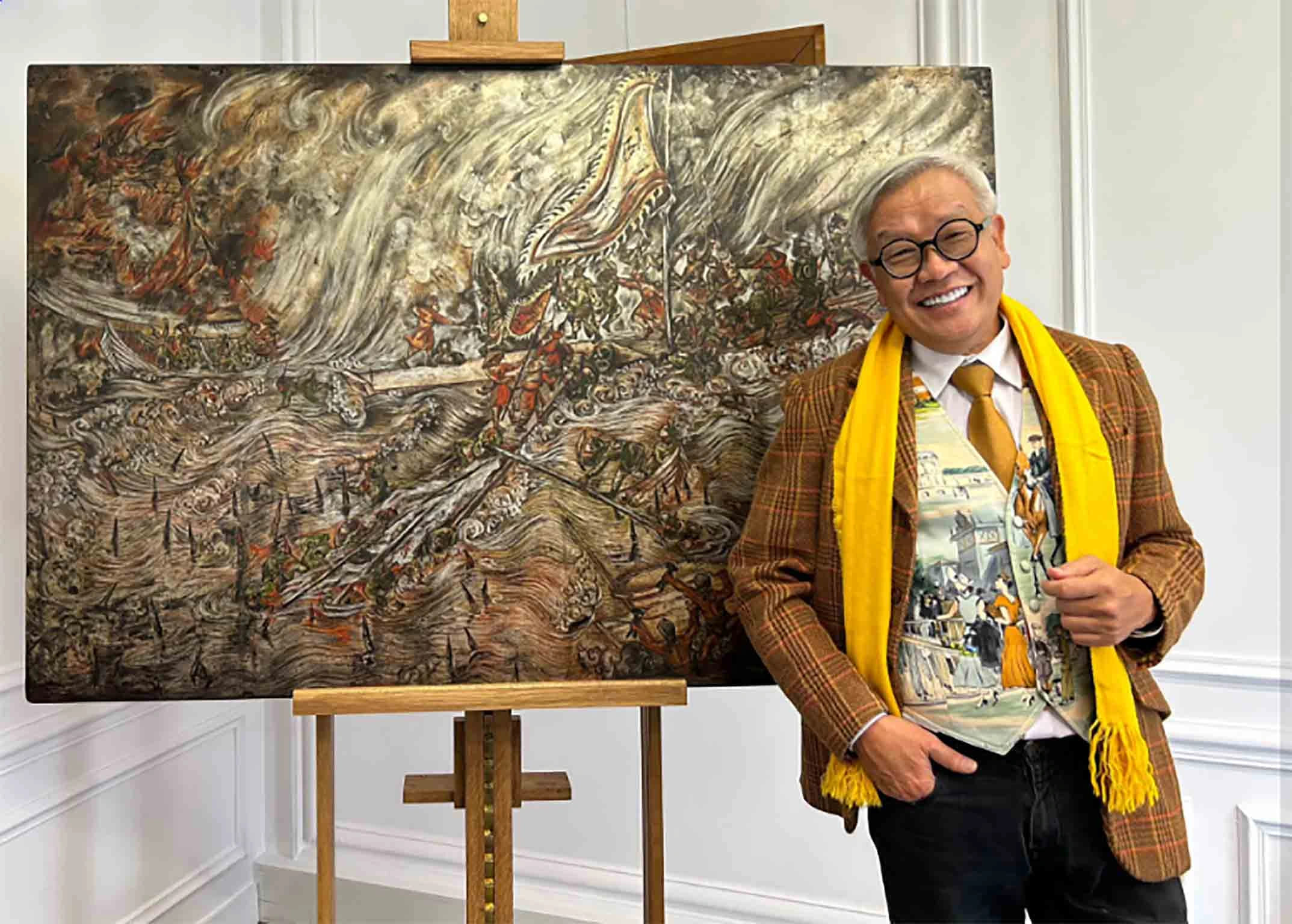
Nguyễn Gia Trí’s Influence on Modern Vietnamese Fine Arts
Nguyễn Gia Trí didn’t just create; he mentored, profoundly shaping future generations.
How Did Nguyễn Gia Trí Influence Later Artists?
- Mentorship: Guided students like Bùi Quang Ngọc and Nguyễn Thanh Liêm in lacquer techniques.
- Innovation: Integrated lacquer into fine art, inspiring Nguyễn Tư Nghiêm and Thành Chương.
- Legacy: Works at the Ho Chi Minh City National Library serve as study materials.
The Legacy of Nguyễn Gia Trí: An Endless Source of Inspiration
Nguyễn Gia Trí was more than a painter; he was a symbol of Vietnamese fine arts, leaving a legacy of over 50 opulent lacquer masterpieces.
Visit the Vietnam Fine Arts Museum to admire Nguyễn Gia Trí’s works. Which piece impresses you most? Share in the comments below!

